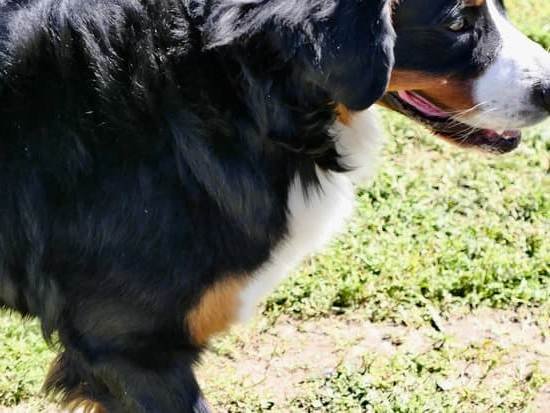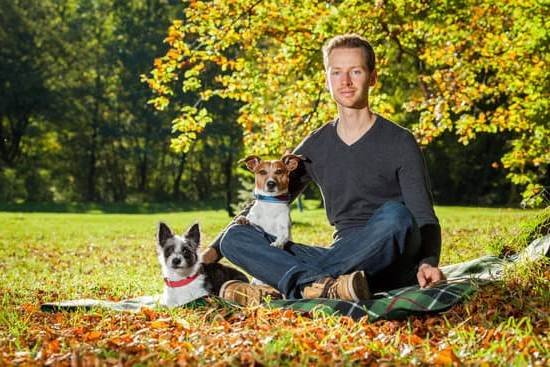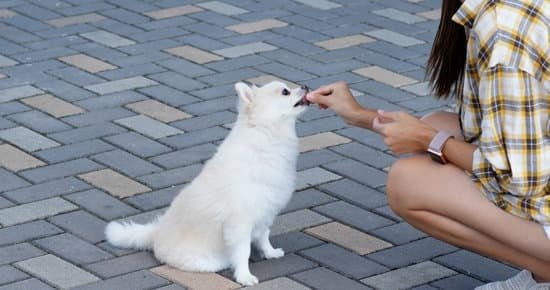Positive dog training has gained popularity in recent years as a humane and effective method for teaching and shaping a dog’s behavior. This approach focuses on reinforcing desired behaviors rather than punishing unwanted ones, resulting in a more positive and enjoyable training experience for both the dog and owner. But who is credited with pioneering this approach to dog training?
Positive dog training is rooted in the philosophy that dogs learn best through positive reinforcement, such as treats, praise, and play. This encourages them to repeat behaviors that result in rewards, leading to a stronger bond between the dog and their owner. The understanding of this philosophy is essential for anyone looking to train their dog using positive methods.
In this article, we will explore the origins of positive dog training and delve into the techniques used in this approach. We will also examine how positive training can impact a dog’s behavior and well-being, alongside real-life success stories of dogs trained using this method. Additionally, we will address the controversy and criticism surrounding positive dog training while highlighting notable figures who have advanced this approach.
Finally, we will look into the future trends and developments in the field of positive dog training and its impact on the overall industry. Stay tuned as we uncover the world of positive reinforcement-based dog training.
Origins of Positive Dog Training
Positive dog training has gained popularity in recent years as a more humane and effective approach to training dogs. The origins of positive dog training can be traced back to the pioneering work of several key individuals who were instrumental in developing and promoting this approach. These figures have had a significant impact on the way we understand and train our canine companions.
One of the most notable figures in the origins of positive dog training is Karen Pryor, a renowned animal behaviorist and trainer. Pryor’s work, particularly her book “Don’t Shoot the Dog.” published in 1984, was groundbreaking in advocating for positive reinforcement techniques in dog training. Her emphasis on using rewards and praise to shape desired behaviors laid the foundation for the modern positive dog training movement.
Another influential figure in the development of positive dog training is Ian Dunbar, a veterinarian, animal behaviorist, and author. In the 1980s, Dunbar began promoting reward-based training methods as an alternative to punishment-based approaches. His contributions to the field include advocating for early puppy socialization and establishing formal guidelines for puppy classes that incorporated positive reinforcement techniques.
- Key individuals credited with advancing positive dog training:
- Karen Pryor
- Ian Dunbar
These pioneers of positive dog training have played a crucial role in shaping the philosophy and methods of modern dog training. Their work has had a lasting impact on how we understand and interact with our canine companions, leading to more harmonious and fulfilling relationships between humans and their dogs.
Positive Reinforcement Techniques
Positive dog training is based on the philosophy of using positive reinforcement to encourage desired behaviors in dogs, rather than punishment or dominance-based methods. This approach focuses on building a strong bond between the dog and the trainer, while promoting good behavior through rewards and praise. Positive reinforcement techniques are at the core of this training method, emphasizing the use of rewards to reinforce desired behaviors.
Use of Rewards
One of the key techniques in positive dog training is the use of rewards such as treats, toys, or verbal praise to reinforce good behavior. When a dog performs a desired behavior, it is rewarded immediately, creating a positive association with that action. This encourages the dog to repeat the behavior in the future, as they have learned that it leads to a positive outcome.
Clicker Training
Clicker training is another popular technique used in positive dog training. It involves using a small handheld clicker device to make a distinct sound when the dog performs a desired behavior. The click is then followed by a reward, effectively marking and reinforcing the behavior. Over time, the sound of the click becomes associated with receiving a reward, and can be used to communicate to the dog that they have performed correctly.
Shaping and Luring
In positive training, shaping involves breaking down complex behaviors into smaller components and teaching each component individually. This method allows for gradual learning and success for the dog. Luring involves using a treat or toy as a guide to entice the dog into performing a specific action. As they follow the lure, they are rewarded for their actions, reinforcing the desired behavior.
The use of these positive reinforcement techniques not only results in well-behaved dogs but also strengthens their bond with their owners through trust and respect. These methods empower dogs to make good choices and ultimately lead to happier pets and satisfied owners alike.
Impact on Dog Behavior
Positive dog training, also known as positive reinforcement training, has been widely recognized for its positive impact on a dog’s behavior and overall well-being. This approach focuses on rewarding desired behaviors rather than punishing unwanted behaviors, creating a more harmonious and trusting relationship between the dog and its owner.
One of the main ways in which positive training affects a dog’s behavior is by promoting desirable habits through rewards. By using treats, praise, and other forms of positive reinforcement, dogs are incentivized to repeat good behaviors. This leads to better obedience and manners, as well as improved communication and understanding between the dog and its owner.
Moreover, positive training has been found to have a significant impact on a dog’s emotional well-being. By using gentle and encouraging methods, dogs are less likely to experience fear, stress, or anxiety during training sessions. This can result in a happier and more confident dog who is eager to learn and engage with its environment.
In addition to improving behavior and well-being, positive training can also strengthen the bond between dogs and their owners. The focus on positivity and mutual respect fosters a stronger sense of trust and cooperation between the two parties. This not only enhances the training process but also enriches the overall relationship for both the dog and its owner.
Success Stories
Case Study 1: Max’s Transformation
One remarkable success story in positive dog training is Max, a rescue dog with severe fear and anxiety issues. Max had a traumatic past that made it difficult for him to trust humans and other dogs. Traditional training methods only worsened his behavior, as punishment-based techniques heightened his fear and aggression.
However, with the implementation of positive reinforcement methods, Max slowly began to show progress. Through treats, praise, and clicker training, Max learned to associate humans and other dogs with positive experiences. Over time, he became more confident, less fearful, and was able to build healthy relationships with both human and canine companions.
Case Study 2: Bella’s Obedience Training
Bella, a hyperactive Labrador Retriever, struggled with obedience and impulse control. Her owners turned to positive dog training as they sought a gentle yet effective approach. Through positive reinforcement techniques such as clicker training and shaping behavior through rewards, Bella learned to control her impulses and respond to commands positively. The bond between Bella and her owners grew stronger as she eagerly participated in training sessions without fear or reluctance.
Case Study 3: Rocky’s Aggression Rehabilitation
Rocky was a Pitbull mix who displayed aggressive behaviors due to lack of socialization during puppyhood. His aggression posed a safety risk for both humans and other animals. Positive reinforcement-based behavior modification was implemented to change Rocky’s response patterns. Instead of punishing aggressive behaviors, the focus was on reinforcing calmness and gentle interactions through reward-based methods. Over time, Rocky’s aggressive tendencies diminished significantly as he learned alternative behaviors that were reinforcing and non-threatening.
These real-life examples demonstrate the power of positive dog training in transforming challenging behaviors into desirable ones while nurturing the human-dog bond. These success stories showcase the effectiveness of this approach in addressing various behavior issues in dogs without resorting to harsh or punitive measures applicable for dog by any breed or age group.
The Debate
Pryor, a biologist by training, introduced the concept of using a clicker as a tool for operant conditioning in dog training. Her influential book, “Don’t Shoot the Dog: The New Art of Teaching and Training,” brought positive reinforcement techniques to a wider audience and revolutionized the way people train their dogs.
Another key figure in positive dog training is Ian Dunbar, a veterinarian, animal behaviorist, and writer. He is known for his advocacy of using gentle, reward-based methods in dog training. Dunbar’s innovative approach emphasizes building a strong bond between dogs and their owners through positive interactions and reinforcing desirable behaviors. His contributions have had a lasting impact on the field of dog training and have helped shape modern positive reinforcement techniques.
Patricia McConnell is also among the notable figures in positive dog training. As an ethologist, certified applied animal behaviorist, and author, McConnell has been a vocal advocate for force-free and fear-free training methods. Her work focuses on understanding canine behavior and communication to create effective training strategies that prioritize the well-being of dogs.
These individuals, along with many others in the field of dog training and animal behavior, have played pivotal roles in shaping the philosophy and practices of positive dog training. Their contributions have not only improved the way dogs are trained but have also significantly impacted the relationship between humans and their canine companions.
| Notable Figures | Contribution |
|---|---|
| Karen Pryor | Introduced clicker training as a tool for operant conditioning |
| Ian Dunbar | Advocated for gentle, reward-based methods in dog training to build strong bonds between dogs and their owners |
| Patricia McConnell | Focused on force-free and fear-free training methods by understanding canine behavior and communication |
Notable Figures in Positive Dog Training
Positive dog training has become increasingly popular in recent years, with many dog owners and trainers recognizing the benefits of this approach. One key individual credited with advancing positive dog training is Karen Pryor. Pryor, a behavioral biologist and dolphin trainer, is known for her groundbreaking work in applying operant conditioning techniques to animal behavior, including dogs.
Her influential book “Don’t Shoot the Dog.” introduced the idea of using positive reinforcement to shape animal behavior, laying the foundation for modern positive dog training methods.
Another notable figure in positive dog training is Ian Dunbar, a veterinarian, animal behaviorist, and author. Dunbar founded the Association of Pet Dog Trainers and has been a vocal advocate for force-free, rewards-based training methods. His contributions to the field have helped shape positive dog training into what it is today. His emphasis on socialization and early puppy training has significantly influenced how dogs are trained and raised.
In addition to Pryor and Dunbar, Victoria Stilwell has also made significant contributions to positive dog training. Stilwell is a well-known dog trainer and television personality who promotes force-free training methods through her TV show “It’s Me or the Dog.” She emphasizes the use of positive reinforcement and humane handling techniques to address behavior issues in dogs.
Overall, these notable figures have played a crucial role in advocating for and advancing positive dog training methods. Their work has helped shape the philosophy and techniques used by countless trainers and pet owners around the world.
| Key Figure | Contribution |
|---|---|
| Karen Pryor | Pioneered the use of operant conditioning techniques in animal behavior, including dogs |
| Ian Dunbar | Founded the Association of Pet Dog Trainers and emphasized force-free, rewards-based training methods |
| Victoria Stilwell | Promotes force-free training through her TV show “It’s Me or the Dog” and emphasizes humane handling techniques |
The Future of Positive Dog Training
In conclusion, positive dog training has made significant strides in the field of animal behavior and training. The philosophy of using rewards and positivity to shape a dog’s behavior has proven to be effective in creating well-behaved and happy dogs. This approach, pioneered by individuals such as Karen Pryor and Ian Dunbar, has revolutionized the way we understand and train our canine companions.
The impact of positive dog training on dog behavior and well-being cannot be understated. By using techniques such as clicker training, shaping, and luring, trainers are able to build a strong bond with their dogs while effectively teaching them desired behaviors. Success stories abound, showcasing how positive reinforcement has transformed problematic behaviors into obedience and cooperation.
Despite its success, positive dog training is not without controversy and criticism. However, the future of this approach looks promising, with ongoing trends and developments in the field. As more dog owners recognize the benefits of positive training methods, the industry is likely to see a shift towards this more compassionate and effective approach to dog training. Positive dog training is indeed here to stay, offering a bright future for both dogs and their human companions.
Frequently Asked Questions
Who Invented Positive Reinforcement Dog Training?
Positive reinforcement dog training was developed by psychologist B.F. Skinner, who is known for his work in behaviorism and operant conditioning. He introduced the concept of using rewards to reinforce desired behaviors in animals, including dogs.
When Did Positive Dog Training Start?
Positive dog training can be traced back to the mid-20th century when B.F. Skinner first introduced the principles of operant conditioning. However, positive reinforcement as a method for dog training gained popularity in more recent years as trainers and owners began to shift away from punishment-based techniques.
What Is Positive Reinforcement Dog Training Theory?
The theory behind positive reinforcement dog training is based on the principle that behaviors followed by rewards are more likely to be repeated. In this method, desirable behaviors are rewarded with treats, praise, or toys, which increases the likelihood of those behaviors being performed again.
This approach focuses on encouraging and reinforcing good behavior rather than punishing unwanted behavior. It aims to build a strong bond between the dog and the trainer/owner while promoting a positive learning experience for the animal.

Welcome to the blog! I am a professional dog trainer and have been working with dogs for many years. In this blog, I will be discussing various topics related to dog training, including tips, tricks, and advice. I hope you find this information helpful and informative. Thanks for reading!





